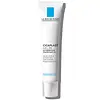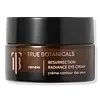What's inside
What's inside
 Key Ingredients
Key Ingredients

 Benefits
Benefits

 Concerns
Concerns

 Ingredients Side-by-side
Ingredients Side-by-side

Glycerin 21%
HumectantWater
Skin ConditioningDimethicone
EmollientPanthenol
Skin ConditioningPentylene Glycol
Skin ConditioningC30-45 Alkyl Dimethicone
Skin ConditioningPolybutene
Sodium Citrate
BufferingPEG/PPG-18/18 Dimethicone
EmulsifyingCitric Acid
BufferingDimethiconol
EmollientPolysorbate 20
EmulsifyingMadecassoside
AntioxidantCaprylyl Glycol
EmollientSodium Hyaluronate
HumectantZinc Gluconate
Skin ConditioningCopper Gluconate
Skin ConditioningManganese Gluconate
Skin ConditioningTocopherol
AntioxidantGlycerin 21%, Water, Dimethicone, Panthenol, Pentylene Glycol, C30-45 Alkyl Dimethicone, Polybutene, Sodium Citrate, PEG/PPG-18/18 Dimethicone, Citric Acid, Dimethiconol, Polysorbate 20, Madecassoside, Caprylyl Glycol, Sodium Hyaluronate, Zinc Gluconate, Copper Gluconate, Manganese Gluconate, Tocopherol
Camellia Sinensis Leaf Extract
AntimicrobialMangifera Indica Seed Butter
Skin ConditioningGlycerin
HumectantHydrogenated Vegetable Oil
EmollientSilybum Marianum Ethyl Ester
Skin ConditioningCetearyl Olivate
Coffea Arabica Seed Oil
MaskingSorbitan Olivate
EmulsifyingSelaginella Lepidophylla Extract
EmollientTerminalia Arjuna Extract
Skin ConditioningSodium Hyaluronate
HumectantCoffea Arabica Seed Extract
MaskingGlycyrrhiza Glabra Root Extract
BleachingHippophae Rhamnoides Oil
EmollientRosa Rubiginosa Seed Oil
EmollientSimmondsia Chinensis Seed Oil
EmollientPersea Gratissima Oil
Skin ConditioningLactobacillus Ferment
Skin ConditioningCaprylic/Capric Triglyceride
MaskingOleic Acid
EmollientPopulus Tremuloides Bark Extract
AntiseborrhoeicCitric Acid
BufferingSodium Phytate
Tocopherol
AntioxidantSclerotium Gum
Emulsion StabilisingLecithin
EmollientPhenethyl Alcohol
MaskingEthylhexylglycerin
Skin ConditioningCamellia Sinensis Leaf Extract, Mangifera Indica Seed Butter, Glycerin, Hydrogenated Vegetable Oil, Silybum Marianum Ethyl Ester, Cetearyl Olivate, Coffea Arabica Seed Oil, Sorbitan Olivate, Selaginella Lepidophylla Extract, Terminalia Arjuna Extract, Sodium Hyaluronate, Coffea Arabica Seed Extract, Glycyrrhiza Glabra Root Extract, Hippophae Rhamnoides Oil, Rosa Rubiginosa Seed Oil, Simmondsia Chinensis Seed Oil, Persea Gratissima Oil, Lactobacillus Ferment, Caprylic/Capric Triglyceride, Oleic Acid, Populus Tremuloides Bark Extract, Citric Acid, Sodium Phytate, Tocopherol, Sclerotium Gum, Lecithin, Phenethyl Alcohol, Ethylhexylglycerin
 Reviews
Reviews

Ingredients Explained
These ingredients are found in both products.
Ingredients higher up in an ingredient list are typically present in a larger amount.
Citric Acid is an alpha hydroxy acid (AHA) naturally found in citrus fruits like oranges, lemons, and limes.
Like other AHAs, citric acid can exfoliate skin by breaking down the bonds that hold dead skin cells together. This helps reveal smoother and brighter skin underneath.
However, this exfoliating effect only happens at high concentrations (20%) which can be hard to find in cosmetic products.
Due to this, citric acid is usually included in small amounts as a pH adjuster. This helps keep products slightly more acidic and compatible with skin's natural pH.
In skincare formulas, citric acid can:
While it can provide some skin benefits, research shows lactic acid and glycolic acid are generally more effective and less irritating exfoliants.
Most citric acid used in skincare today is made by fermenting sugars (usually from molasses). This synthetic version is identical to the natural citrus form but easier to stabilize and use in formulations.
Read more about some other popular AHA's here:
Learn more about Citric AcidGlycerin is already naturally found in your skin. It helps moisturize and protect your skin.
A study from 2016 found glycerin to be more effective as a humectant than AHAs and hyaluronic acid.
As a humectant, it helps the skin stay hydrated by pulling moisture to your skin. The low molecular weight of glycerin allows it to pull moisture into the deeper layers of your skin.
Hydrated skin improves your skin barrier; Your skin barrier helps protect against irritants and bacteria.
Glycerin has also been found to have antimicrobial and antiviral properties. Due to these properties, glycerin is often used in wound and burn treatments.
In cosmetics, glycerin is usually derived from plants such as soybean or palm. However, it can also be sourced from animals, such as tallow or animal fat.
This ingredient is organic, colorless, odorless, and non-toxic.
Glycerin is the name for this ingredient in American English. British English uses Glycerol/Glycerine.
Learn more about GlycerinSodium Hyaluronate is hyaluronic acid's salt form. It is commonly derived from the sodium salt of hyaluronic acid.
Like hyaluronic acid, it is great at holding water and acts as a humectant. This makes it a great skin hydrating ingredient.
Sodium Hyaluronate is naturally occurring in our bodies and is mostly found in eye fluid and joints.
These are some other common types of Hyaluronic Acid:
Learn more about Sodium HyaluronateTocopherol (also known as Vitamin E) is a common antioxidant used to help protect the skin from free-radicals and strengthen the skin barrier. It's also fat soluble - this means our skin is great at absorbing it.
Vitamin E also helps keep your natural skin lipids healthy. Your lipid skin barrier naturally consists of lipids, ceramides, and fatty acids. Vitamin E offers extra protection for your skin’s lipid barrier, keeping your skin healthy and nourished.
Another benefit is a bit of UV protection. Vitamin E helps reduce the damage caused by UVB rays. (It should not replace your sunscreen). Combining it with Vitamin C can decrease sunburned cells and hyperpigmentation after UV exposure.
You might have noticed Vitamin E + C often paired together. This is because it is great at stabilizing Vitamin C. Using the two together helps increase the effectiveness of both ingredients.
There are often claims that Vitamin E can reduce/prevent scarring, but these claims haven't been confirmed by scientific research.
Learn more about Tocopherol